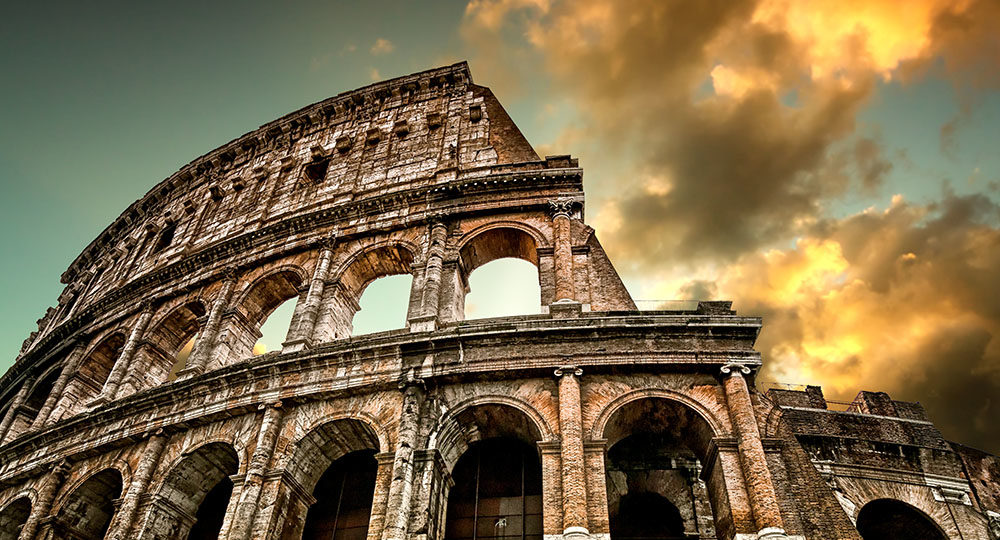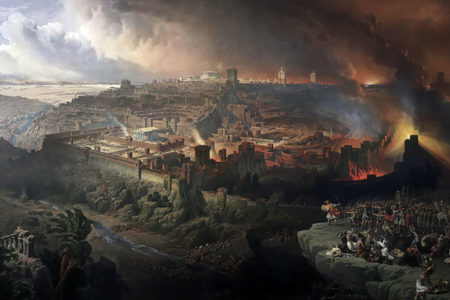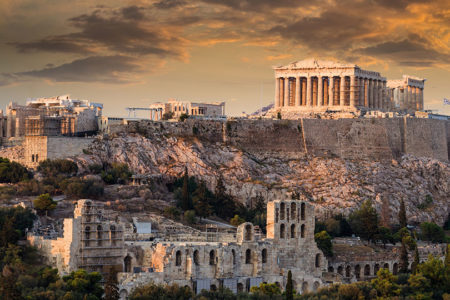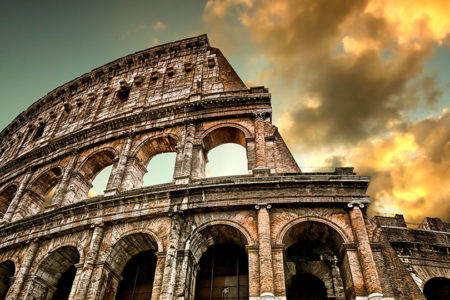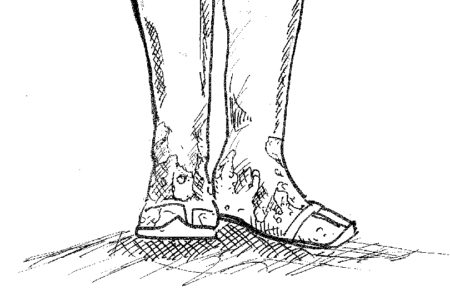Ancient Rome: The Pathology of Political Power
The solace of blissful sleep was violently shattered with dreadful visions of hideous creatures. So disturbing was the dream that the usually composed Prophet Daniel was greatly troubled in mind and body. The fourth creature, so terrible and exceedingly strong, grieved him the most.
The visions described by the prophet in Daniel 7 were God’s revelation of the different Gentile kingdoms that would precede the Messianic Kingdom (v. 17). Most Bible scholars believe the fourth beast represents the ancient Roman Empire. The rabbis also considered the fourth beast to be Rome, as stated in their writings (Talmud Abodah Zarah 2b). Both views are verified by the testimony of secular history. A brief outline of the political evolution of ancient Rome substantiates its horrific description revealed to Daniel that fateful evening.
Many legends surround the founding of Rome. The most popular account involves twin brothers named Romulus and Remus who, it was taught, were fathered by Mars, the mythical god of war. Abandoned to drown in the Tiber River by a wicked king, the boys were discovered by a ferocious she-wolf who raised them. They later killed the king and sought a place to establish a city of their own. When Remus did not approve of the chosen site, a quarrel ensued, and Romulus killed him. Subsequently, in the marshlands near the mouth of the Tiber River, a crude settlement was formed in 753 BC. It was called Rome, in honor of Romulus, the heartless brother. This story, if only partially true, shows the violent beginning that has characterized the history of Rome.
The reality is that Rome was built on the ruins of an ancient and mysterious civilization populated by the Etruscans. Rome is indebted to these people, as well as to the Greeks, for nearly all of its culture. Preferring to borrow rather than create, Rome adopted such features as their numerical system, gods, festivals, and even the familiar toga. However, the most important item taken from the Etruscans was their knowledge and use of iron, a metal perfectly suited to portray the callous and ruthless temperament of this empire.
There were three basic developments of Rome’s political character. The first was the early monarchy period from 753 to 509 BC. This was a formative time during which seven cruel although occasionally lenient kings pounded the iron on the anvil to shape the Roman state. One king regulated the form of worship to be sanctioned by the settlement, another focused on building a fearsome army, and yet another concentrated on enlarging and beautifying the city with public buildings. All seven kings diligently hammered into fashion the Rome that was to rule the entire ancient world.
The second stage was the move from monarchal rule to senate rule, which covered the years from 509 to 31 BC. The transition was not peaceful. Powerful families wrested control from the kings through violence. Although formed with good intentions, the senate soon was plagued by many problems, both internal and external. This period is commonly referred to in classical writings as the Roman Republic.
The republic was designed to help the people, but instead it neglected them. The same powerful families that brought down the monarchy used every known form of vice and corruption in their quest for senate seats. Moral scandal and deceit were rampant throughout the government. The plebeians (common people) soon realized that the aristocracy’s paramount consideration was the pursuit of their power, position, and prestige.
During this period Rome developed a foreign policy of expansion and absolute control of outside territories. The army was the instrument used to implement this policy. It was an army unlike any other in the ancient world. For nearly six hundred years the Roman army guarded its kingdom and interests with iron-like fortitude. The infectious disease of war permeated the soul of Rome from its early years. Surrounded by enemies, Rome learned to fight to survive. Incorporating the best fighting styles and tactics of the squelched armies of Hannibal and Alexander the Great, Rome forged a formidable army that crushed and shattered the ancient world. In Daniel’s vision, the fourth beast with great iron teeth to devour and break all into pieces (7:7, 23) illustrates the Roman legions’ campaigns.
Still, the city’s external affairs were in shambles. Rome had to resort to an iron hold of force with its exploited and dissatisfied allies. They were in a constant state of war with various ethnic groups. Only by sheer determination was Rome finally able to secure complete control over the entire Italian peninsula in 272 BC. All that remained was the subjugation of the mighty Greek city-state of Carthage on the coast of North Africa. After a 43-year struggle with this city, Rome emerged victorious. By 146 BC, the entire Mediterranean Sea literally could be called a “Roman lake.” This was the starting point for the emergence of the fourth kingdom of Daniel’s prophetic dream.
In spite of the republic’s sad state of affairs, the common people were content to leave the politics to the politicians. The masses simply wanted internal stability and freedom to pursue personal liberties without interference. But as the republic wobbled in corruption, it ultimately failed to provide these minimum benefits. The people then looked with favor on another form of government.
Instigated by the common people, the third stage of Rome’s development was a move from senate rule to imperial rule. The masses cried for change. In 31 BC, one of Rome’s seemingly ceaseless civil wars came to an end, and the victor was a sickly 18-year-old bearing the grandiose name Gaius Julius Caesar Octavianus. An appreciative senate, which by 27 BC, had ceased being an effective agency of the government, proclaimed him ruler of Rome. Adding to his gallery of names, the senate gave him the title “Augustus,” meaning revered one. This is the same Augustus mentioned in Luke 2:1 in connection with the decree issued for all the world to be taxed, which brought Mary and Joseph to Bethlehem, where the Messiah was to be born.
Augustus was the people’s answer for change. Politics was abolished, to the joy of the populace. Seutonius, a well-known Roman historian of the period, said that with Augustus a “New Order has been ushered. The noble and virtuous practices of the ideal past history of the city has entered into a New Development.” That was the hope; however, very few of Augustus’ followers realized that the cost for this new order and development would be a reign of despotism.
Under a subtle pretense of liberating the people, Augustus seized every opportunity to manipulate the Roman constitution to reflect his own desires and profit. His actions formed the pattern that all the lunatic successors to the throne followed. These emperors and their irresponsible administrations abandoned themselves to every riotous vice imaginable. Yet, despite this new politics of decadence, the senate was content that some semblance of order was returned to the government. The people for the most part were satisfied that social stability and personal security had returned. This period was the political and moral backdrop for the New Testament and early church history.
The statement in Daniel 2:40 that this fourth kingdom would subdue or weaken all things is demonstrated by Rome’s method of conquering nations. Roman historians have stated that the main strategy of imperial Rome was to weaken a country by destroying its infrastructure and waiting like a lion to deliver the fatal blow. The proven tactic of divide and conquer was skillfully applied. Rival powers were split and encouraged to destroy each other. Politicians were bribed and seduced. The people’s self-confidence was undermined to such a degree that it encouraged sedition. Such scheming left a nation with no alternative but to submit or face annihilation.
Rome was powerful but not invincible. Around AD 180, the empire began a slow decline caused by a combination of factors. The constant wars in the provinces devastated trade and crippled the local economy, which broke the spirit of the greedy people, and their dispirited army rebelled against authority. However, the most important contributor to the demise of pagan Rome was the spread of Christianity. In contrast to the degeneracy of society, the Christian message of a better world to come appealed to the masses. The government at first was tolerant, provided that Christ’s followers offered sacrifices to their idolized emperor. When the Christians refused, persecution burst forth, and the church plunged underground to the dark recesses of the catacombs.
In 312 Rome experienced a radical change. A young Roman general marched into the capital to battle a rival for the throne. At a bridge the general supposedly saw a sign of the cross in the sky with these words: “By this sign conquer.” He was victorious. In gratitude, he caused Christianity to emerge as the state religion. His name was Constantine. As dictator, he made many changes, one being the establishment, in 394, of his own imperial capital, Constantinople, on the old Greek city of Byzantium in what is now Turkey. Nebuchadnezzar’s dream of the image with the two legs of iron (Dan. 2:33) points to this period when ancient Rome was divided into east and west.
Western Rome surrendered to the overwhelming assault of the barbarians in 476. Constantinople survived for nearly a thousand years more but eventually was ravaged by the Muslim Ottoman Turks in 1453. The Muslims renamed the city Istanbul.
A study of the history of the last days of Rome shows that the empire did not really fall. It has been suggested that its political system, religion, culture, and militarism continue to exist in many countries of the world today. In reality, the ancient empire only fragmented. A strong world political leader could resuscitate Rome by reunifying the old empire. It is probable that this leader will come to the fore in response to the world’s clamor for some kind of change that will solve the present global problems. This revived Roman empire, however, will be the final evolution of ancient Rome’s repression under the guise of peace and liberation. The coming leader will be the culmination of all that was demonic in Rome. The Bible appropriately refers to him as the Antichrist (1 Jn. 2:18). Since the history of ancient Rome is a forecast of things to come, the present challenge is to believe in Jesus Christ while there is still time (1 Jn. 5:13).
